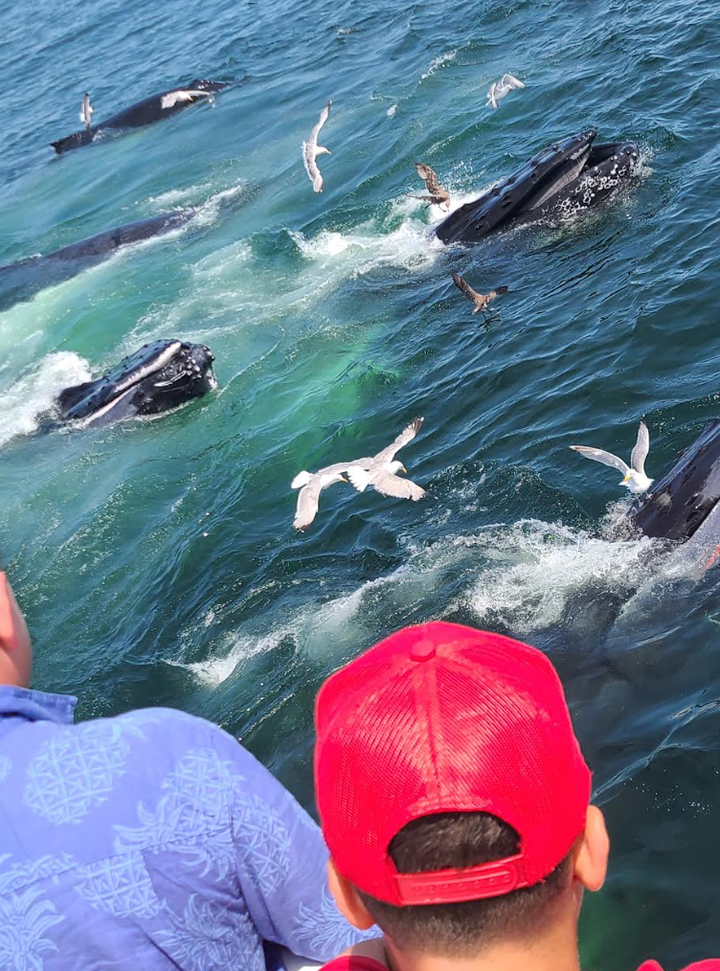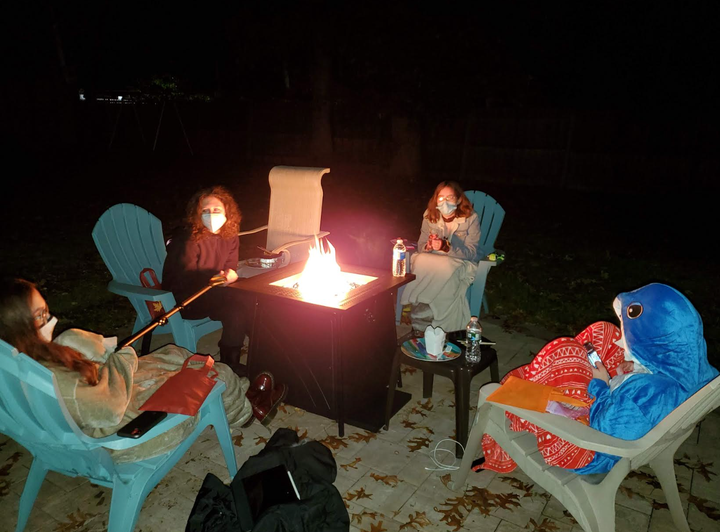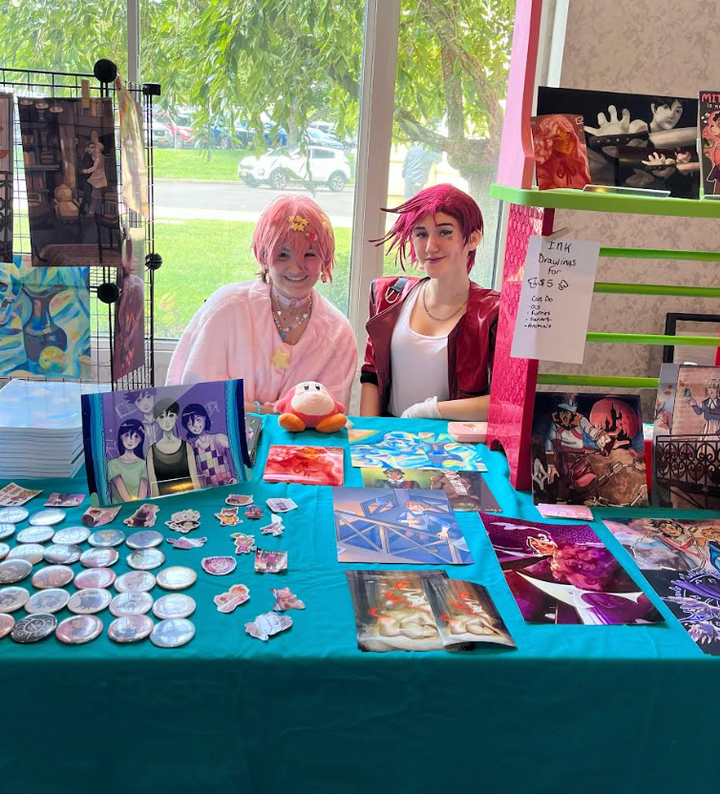
Seven whales had just breached within 100 yards of our boat off Cape Cod, and my friend was playing Roblox. I usually get as annoyed as the next teen when adults talk about how kids are always on their phones, but on that day in Massachusetts, I was overcome by the urge to hurl his phone into the ocean as an intervention.
We’re broken, I thought. Somewhere along the way, a universal shift occurred and most of us, me included, forgot how to be with people and experience life outside of a screen. I posit that this universal shift was called COVID-19.
The difference between an enjoyment of technology and an addiction to technology isn’t what happens when kids are on phones, but what happens when they aren’t. Early on in the pandemic, not much was available to us outside of those screens. We weren’t just encouraged to spend more time online; we were mandated to for school.
Real classrooms turned into Google classrooms, mall trips with friends turned into Zoom hangouts, familiar faces turned into profile pictures. While my friends mostly went back to a masked and distanced version of school in September 2020, I stayed remote for my final year of middle school because my mom and I both have health conditions that make us high risk. It didn’t seem worth it to gamble our lives to get hit with volleyballs in gym class, so I did virtual yoga. After a year and a half of near-total isolation, it became hard to remember what a live social interaction was like.
Instead of a 14th birthday party, I had a parade of people in cars honking and waving in front of my house. My earliest visits with friends, once it was safe(r) to meet up again, were socially distanced hangouts in the backyard. We did outdoor movie nights with chairs set 6 feet apart and masks on. My boyfriend brought me flowers and set them on the ground so we wouldn’t be within 6 feet when I picked them up. We’d been dating for six months before the pandemic hit, and I was sure that we were about to have our first kiss — but that never happened. COVID stole my kiss.

In a time when the world was so complicated, the internet was a place to simplify — to break everything down to TikTok memes and surface interactions, and show everyone the things you wanted to be seen. We could mindlessly scroll, far away from the failures of reality. I am extremely grateful that my family and I stayed safe during the pandemic, but this safety feels bittersweet because it robbed me of my early teenhood.
Missing out on such a critical stage of life also affected my post-quarantine development. When the state of emergency ended, everyone was excited to go back to normal. But what was normal, anyway? Instead of memories of shared experiences with my friends during that time, I had Animal Crossing and a problematic Pinterest group chat. I hadn’t learned how to be whoever I was becoming. I was stuck in my cocoon.
I’m just out of practice, I assured myself when my social battery refused to fully take a charge. But I was entering high school without having seen my classmates (except their internet-projected versions of themselves) for 18 months. Readjusting to real-world conversation was difficult after being conditioned to social media culture, where everything I wrote was subject to instant likes or anger from strangers.
Creating an internet persona is like playing a character in a movie. Because we can cherry-pick which parts of our lives to show people, the internet allows us to create two-dimensional selves. I was an artist, anime lover and activist posting the art and costumes I’d made, hoping for validation and trying not to get canceled for writing the wrong thing. I grew so accustomed to keeping my opinions sanitised and my interactions light that I had to retrain myself in talking with friends offline, where different rules apply.
In recent months, I’ve been consciously putting myself in social situations to work on this. None has been more successful than what I did a few weekends ago: I rented a booth with a friend at a comic convention to sell my artwork, and it was exhilarating to have people come over to just talk. They’d see something I drew on a sticker or button that resonated, and they’d want to tell me about their fandoms, their ADHD hyperfixations or their original characters. Nobody was looking at their phones, except to take pictures and share contact information.

After two long days at my booth, I expected to be drained, but I was recharged. All of my concerns about being awkward and writing the wrong things online lifted in person. There were lots of times when I made imperfect conversation — pauses when I couldn’t think of the right word, moments when I didn’t get a reference, or one of us misunderstood something that the other said — but it was OK. It was human. We were doing the best we could to connect with each other, face to face. Sometimes we said dumb things. Sometimes we made each other laugh. And it was all amazing.
A little girl who liked my art drew me a picture of a cat. A fellow artist brought me snacks, and an attendee checked if I needed a bottle of water. (He brought eight of them in his backpack, for sharing.) I gathered 29 business cards, and bought two comic books and a 3D-printed dragon. Visitors would stop by my booth the first time to look at my stuff, but then a second or third time just to say hi and tell me about other things that they saw. It was all so people-y.
I hadn’t even realised how much I needed these interactions. It was hard to sleep because my brain was firing with thoughts about these new people — many of whom will just become little memories of a moment in time, but some who might become friends. I felt a crack forming in the pandemic cocoon, like remembering a part of life that I’d forgotten existed.
Gen Z has unavoidably been dubbed the “cellphone generation” ― that’s the way we grew up and the world we now live in. I know that sometimes our mannerisms make us seem like we’ve departed from Earth on a one-way trip to the digital world. But I’ve had a lot of experience with teenagers (even walking among their ranks), and I’ve determined that we can come back. COVID-19 damaged our ability to socialise, not our desire to do so.
Groups of us still walk a mile together from my school to 7-Eleven after class, which certainly isn’t just about getting a pack of gum. My friend is still willing to wake up to a blaring military alarm at 6 a.m. to go whale watching with me, and because of that, his phone remains free from the ocean. We’re still trying, and there’s a collective joy in the air fuelled by the trying — an appreciation of what it took to get here. Maybe there’s time to catch up yet.
Sarina Policastro is a 16-year-old high school senior who is planning to major in art and become an art teacher. She self-published the graphic novel “Clefelo” and the children’s picture book “Mitzy May Is Nothing Like Me!” One of her short animations, “Amira’s Letters,” is currently appearing in film festivals and won National PTA’s Reflections award for film. She is a lover of theatre, tea and vampires.